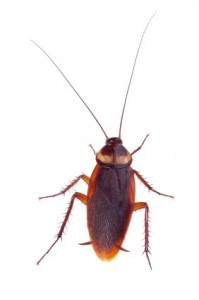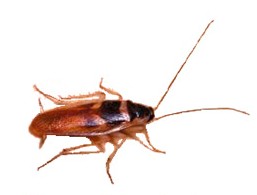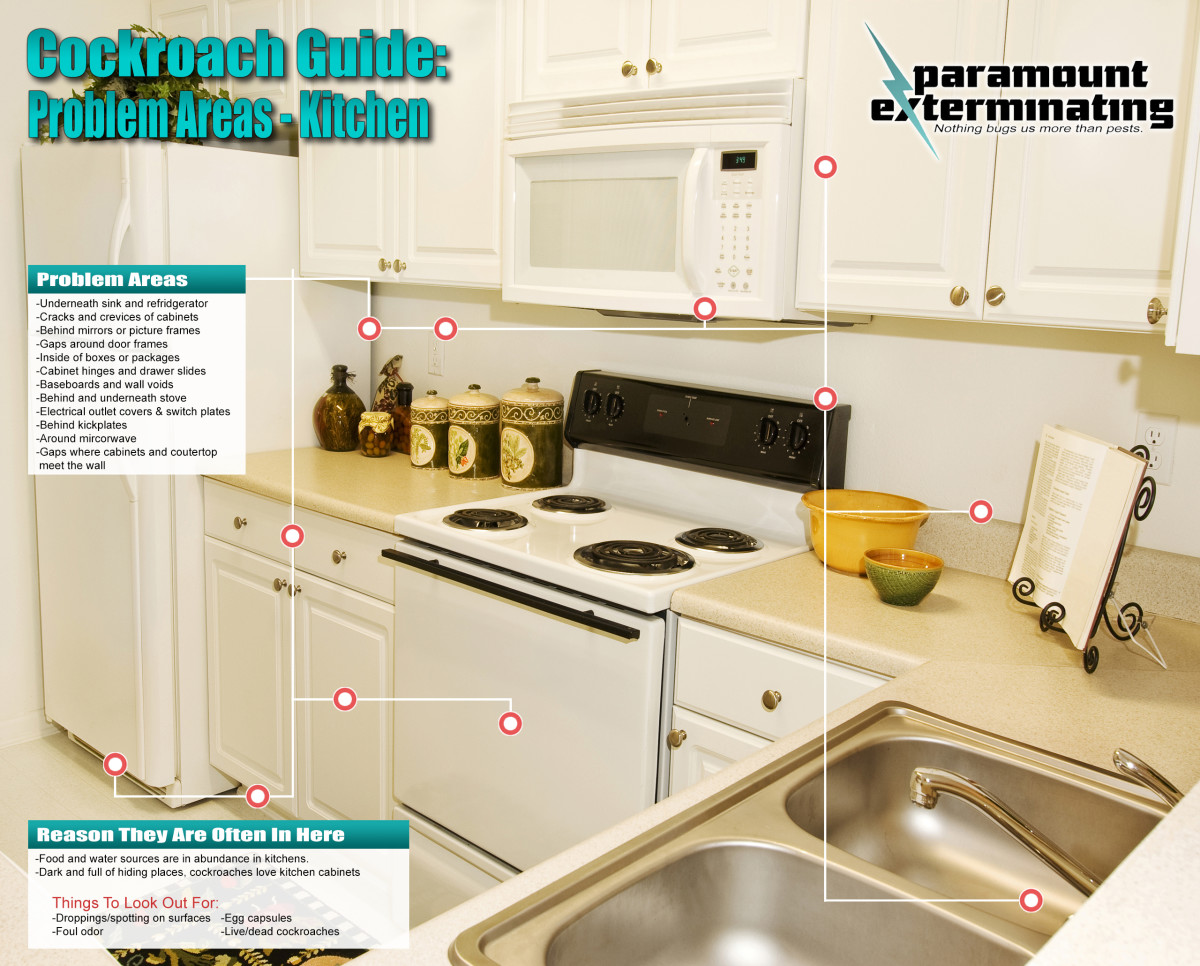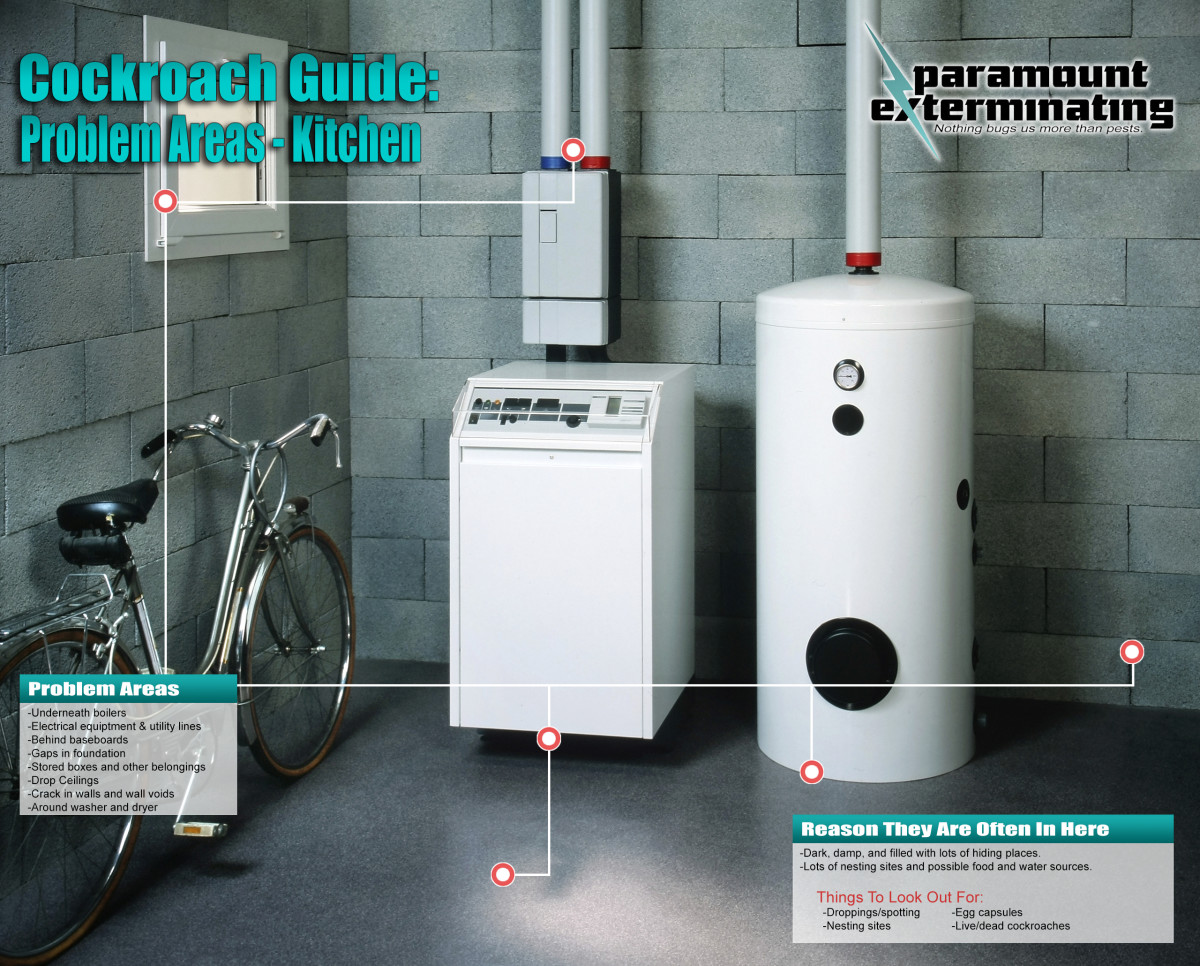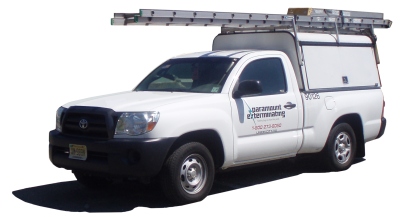COCKROACHES
Even if you’ve only seen one, there may be more. Cockroach problems can become BIG, FAST! Get control before it becomes a bigger problem. Families and businesses in Hudson County, NJ having been choosing Paramount Exterminating to get rid of their cockroach problems since 1930. That’s because we make it easy with our 3 step treatments…
PUTTING ROACHES IN THEIR PLACE
- Complete cockroach control – Your technician is your cockroach expert. They will assess the problem, create a treatment program, and perform the initial treatment. Spraying, baiting, and trapping methods are all applied based on what the technician finds during your inspection.
- Maintaining pressure – We schedule you for follow up visit 1-2 weeks after your initial service so that your technician can assess the treatment program and replace controls as needed.
- Long-term prevention – Your technician will find any entry points, food/water sources that may attract them, and educate you on how to prevent future problems
- Additional follow-ups – Sometimes additional follow-up services are needed to take care of more advanced problems. Your technician will discuss this with you if they feel its necessary.
HOW DOES PARAMOUNT GET RID OF ROACHES?
STEP 1: INSPECTION AND TREATMENT
Your technician will assess the problem and perform the initial treatment. Spraying, baiting, and trapping methods are all applied based on what the technician finds during your inspection. This service generally takes 30 – 45 minutes and will knock out the majority of your cockroach activity. Expect to see what appears to be an increase in cockroach activity, as this treatment forces them out of their hiding places and causes them to interact with our materials for the fastest control possible.
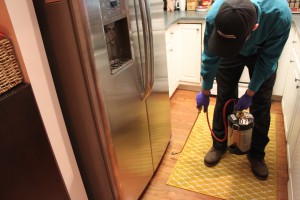
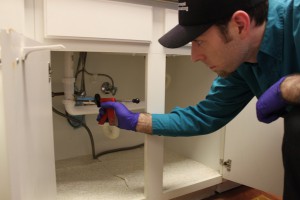
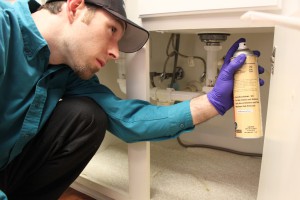
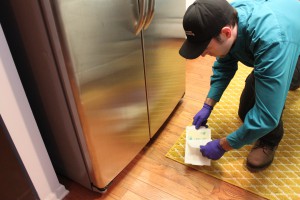
STEP 2: FOLLOW-UP TREATMENT AND RE-INSPECTION
We schedule you for follow up visit 1-2 weeks after your initial service so that your technician can assess the treatment program, retreat problem areas, and replace controls as needed. Your technician will ask you if you have seen more roach activity and will ask you to pin point affected areas so they can be treated aggressively to achieve the quickest results possible. This service generally take 20-30 minutes and ensures that the problem will not return.
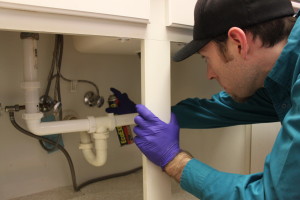
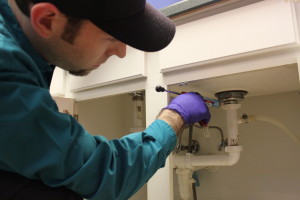
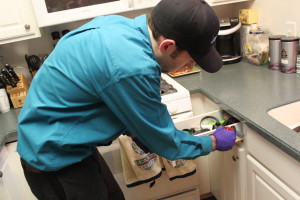

STEP 3: SECOND FOLLOW-UP TREATMENT AND REINSPECTION (Optional)
While we handle most cockroach problems in the first two visits, sometimes additional follow-up services are needed to take care of more advanced problems. Your technician will discuss this with you if they feel its necessary. Additional treatment measures like fogging are available for large spaces and aggressive infestations. The time allotted for second follow-up services varies depending on the severity of the problem.
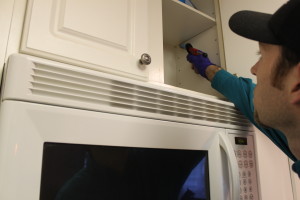

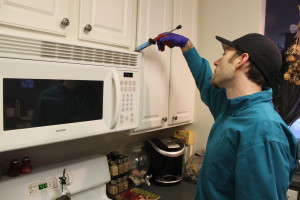
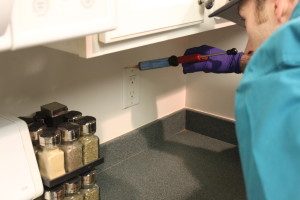
LONG-TERM COCKROACH PROTECTION
 Residual treatments – Takes care of most insects and lasts well beyond your treatment date to ensure continued results.
Residual treatments – Takes care of most insects and lasts well beyond your treatment date to ensure continued results.- Pest activity monitoring – Pest monitors that will trap cockroaches and other small pests are placed in areas that are prone to problems. They are replaced on each service as needed.
FREE ESTIMATES – ZERO OBLIGATIONS
COCKROACH FACTS
Pest Entry: Cockroaches can enter your home in a variety of ways including outside cracks and crevices, pipes that enter the home, vents and sewer lines. They also gain entry when carried in on boxes, grocery bags and other items that get brought into the home. They can even be brought in a person’s clothing.
Environment: Cockroaches need warmth, food and water to survive, making your home is an ideal 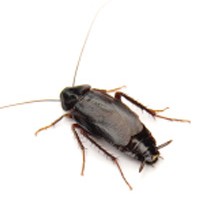 location to cockroaches to live and reproduce. They generally prefer tight hidden places that offer protection like small cracks and crevice. They are scavengers that will eat almost anything and require little water to survive, keeping them active all year long. Generally found in kitchens, bathrooms, basements and areas where water is available.
location to cockroaches to live and reproduce. They generally prefer tight hidden places that offer protection like small cracks and crevice. They are scavengers that will eat almost anything and require little water to survive, keeping them active all year long. Generally found in kitchens, bathrooms, basements and areas where water is available.
Reproduction: Cockroaches can reproduce very quickly and in large numbers. This makes them a serious threat and difficult to treat using over-the-counter products.
Sightings: If you’ve seen one cockroach, chances are there are more that you haven’t seen. Since they are nocturnal pests, people often see them at night when turning on kitchen and bathroom lights and they quickly scatter. Cockroaches seen during the day may indicate an infestation, as they were like forced out by overcrowding.
Heath Concerns: Cockroaches have been known to host a variety of pathogens and diseases and dust from their droppings and skin casts have been known to cause allergic reactions in children and adults.
Home Remedies: Cockroaches are a constant threat and unfortunately, most over-the-counter products simply won’t work. This is because their eggs remain unaffected by over the counter products, only destroying the adult population. Once those eggs hatch, the problem starts all over again. It requires special tools, training and expertise to fully eliminate these pests.
WHAT TYPE OF ROACH IS IT?
 Name:
Name:
German Cockroach (Blatella Germanica)
Physical Traits: Light brown in color; they can be identified by two brown stripes that run vertically along the thorax.
Habitat/Preferences: Commonly seen indoors, these pests stay close to areas that have warmth, food and water. This makes them a regular pest in homes, apartment buildings and food establishments. They will hide in tight spaces during the day and search for food at night. Seeing several of these species during the daytime may indicate, as this is commonly due to overcrowding.
Diet: Non Specific; scavenger diet
Reproduction: High reproductive rate; females can lay one egg capsule, containing an average of 30 eggs, every 25 days.
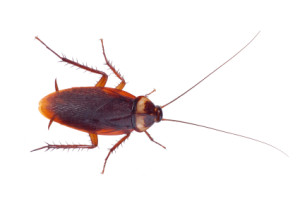 Latin Name: Periplaneta Americana
Latin Name: Periplaneta Americana
Traits and Appearance: They are the largest of the species that are commonly found in New Jersey, averaging 2 inches in length. Reddish brown in color, with wings the same length as their body.
Habits and Habitat: They prefer areas that are warm and damp, and are often found in sewer pipes and basements. They thrive in temperatures between 70 – 80 degrees Fahrenheit. American cockroaches are the least evasive of the common species, often seen during the day. They are the only species common in New Jersey that can fly, although this is generally a rare occurrence.
Diet: Scavenger diet. Can feed on almost anything, especially when food source is limited. Needs water to survive. Prefers decaying material.
Reproduction: Female American cockroaches can lay many eggs despite only mating once. They lay protected capsules that contain an average of 13 eggs each. Nymphs, immature cockroaches, go through a number of molting stages and take nearly two years to reach maturity. An adult American cockroach can live over a year.
History: Originally found in Africa, they were thought to have been brought to America on trading ships.
Blatta orientalis
Traits and Appearance: Dark brown to black in color, and about 1 inch in length. Females appear wingless, despite having very short wings directly behind its head. Males have wings longer than females, but that are shorter than the length of their body. The picture here is of a male oriental cockroach.
Habits and Habitat: Prefers warm, damp environments and can generally be found inside of the home in basements, kitchens and bathrooms. They are often seen outdoors as well, residing in sewers and other areas with favorable conditions.
Diet: Scavenger diet; will eat everything from decaying food and organic matter to raw sewage.
Reproduction: Oriental cockroach females lay egg capsules like most other species of cockroach. Each egg capsule contains up to 16 eggs, with the female able to lay an average of eight capsules within their lifespan. “Nymphs”, or baby cockroaches, go through a 7 stage molting process before becoming fully grown adults. Finding these egg casings and molts are a good sign that you may have a problem you were unaware of.
Supella longipalpa
Traits and Appearance: The Brown-banded cockroach gets its common name from the two yellowish-brown stripes on its wings. They measure about half an inch to 5/8ths inches in length.
Habits and Habitat: Brown-banded cockroaches are also unique in that they require less water to survive than most other species of cockroach. This means that they are often found in places that are warm and dry, rather than the damp areas that other species prefer. They are often found in high locations, and can be found infesting furniture and electronics like TV’s and computers. They are nocturnal, and they are able to fly for short distances.
Diet: Scavenger diet; like most species, these pests will eat everything from decaying organic matter to bath soap.
Reproduction: The Brown-banded cockroach female lays egg capsules that contain around 17-18 eggs. “Nymphs”, or immature young, mature over the course of five to six months, and adults can live almost a full year. The female will carry her egg capsule with her for the first day or two before attaching it to an unused surface in an unexposed area. This will protect the egg capsule until the eggs have an opportunity to hatch.
WHERE TO LOOK FOR COCKROACHES
Why Families and Businesses Choose Paramount
- Faster Service – Get your services scheduled quickly and on YOUR time. No one wants to wait weeks for treatment, and we get that.
- Local and Reliable – We have pest control technicians in Union City, Jersey City, Hoboken, Weehawken, North Bergen, and Hudson County everyday to assist our customers at a moments notice!
- More Efficient – We get things done right the first time, saving you time, money, and frustration.
- Better Tools – Our technicians only use the best products available on the professional market making treatments more effective and longer lasting.
- Better variety of treatment methods – including green treatments and baiting programs.
- More Experience – We’ve been defeating cockroaches since 1930, and have the most experienced technicians in the industry.
Click HERE For A Free Estimate!
With a free estimate from one of our experienced professionals, you learn about all of the benefits of Paramount’s services. We will work with you to design a specialized program specific to your needs! Call or click for a free estimate.


